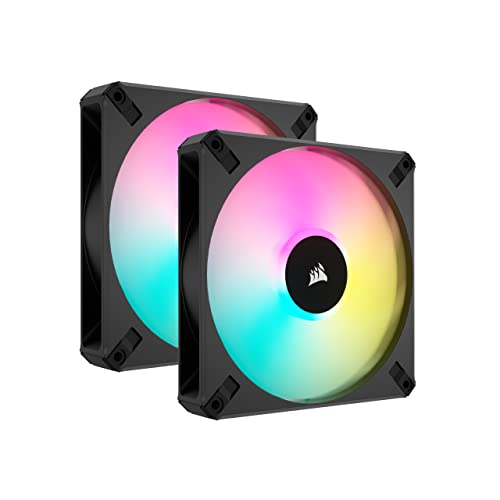Understanding the Importance of a 120mm PC Fan in Your Build
Cooling Efficiency and Performance
When building or upgrading a PC, one of the most important components to consider is the cooling system, and a 120mm PC fan plays a crucial role in that. These fans help maintain optimal temperature levels, which is essential for the performance and longevity of your hardware. Without adequate cooling, parts like the CPU and GPU can overheat, leading to thermal throttling where performance is reduced to prevent damage. A well-chosen fan can significantly enhance airflow within your case, ensuring that heat generated during intensive tasks is effectively expelled.
Noise Levels and Aesthetics
Beyond cooling efficiency, the choice of fan impacts the overall noise level of your build. A quality 120mm PC fan can operate quietly, which is especially beneficial for users who prefer a serene working environment or those who game late into the night. Additionally, many 120mm fans come with customizable RGB lighting, allowing us to enhance the visual appeal of our builds. Choosing the right fan not only contributes to performance but also adds to the aesthetic value of our setup.
Key Features to Consider When Choosing a 120mm PC Fan
Airflow and Static Pressure
When evaluating 120mm fans, we need to pay attention to airflow, typically measured in cubic feet per minute (CFM). A higher CFM indicates better airflow, which is crucial for cooling. Static pressure is also important, especially if the fan needs to push air through obstacles such as air filters or heatsinks. Fans with higher static pressure are designed to perform well under these conditions, making them ideal for situations where airflow is obstructed.
RPM and Noise Levels
The revolutions per minute (RPM) of a fan directly affect how much air it moves and how much noise it generates. Higher RPM fans might move more air but can also produce more noise. We should look for fans that offer a good balance between airflow and noise output, especially models that offer a range of speeds or PWM (Pulse Width Modulation) control, allowing for dynamic adjustment based on the system’s needs.
Build Quality and Durability
The materials used in fan construction can impact their longevity and performance. Models with sturdy casings, high-quality bearings, and durable blades will generally offer better performance over time. It’s worth considering fans that come with longer warranty periods, as they often reflect confidence in the product’s durability.
Top 120mm PC Fan Models Reviewed: Our Recommendations
Popular and Reliable Options
In our analysis of the 120mm PC fan market, we’ve identified several models that stand out for their performance and features. Brands like Noctua, Corsair, and be quiet! consistently produce reliable fans praised for their quiet operation and efficient cooling. For instance, Noctua’s NF-P12 is renowned for its low noise levels and high airflow, making it an excellent choice for both case ventilation and cooling heatsinks. Corsair’s ML120 is another favourite, offering magnetic levitation technology for reduced friction and noise, while delivering robust airflow. For those on a budget, the Arctic P12 can provide solid performance at a competitive price, ensuring you don’t have to compromise on cooling efficiency.
How to Install and Maintain Your 120mm PC Fan for Optimal Performance
Installation Tips and Tricks
Installing a 120mm fan is a straightforward process. Generally, we need to ensure that we have the right fan orientation. Fans should draw air in from the front or bottom of the case and expel it out the back or top. This setup creates an effective airflow path, essential for cooling the components within. An important tip during installation is to ensure the screws or mounting brackets are not too tight, to avoid damaging the fan’s frame or bearings.
Regular Maintenance for Longevity
To keep our fans operating at peak performance, regular maintenance is key. Dust accumulation can drastically reduce a fan’s efficiency. A gentle cleaning with compressed air every few months can keep dust at bay. Additionally, we should check the fan’s bearings and listen for any unusual noises which might indicate a need for lubrication or replacement. Ensuring that our fans are running smoothly not only optimises performance but also extends their lifespan.
Maximising Airflow: Tips for Arranging Multiple 120mm Fans in Your PC
Creating a Positive Air Pressure System
While installing multiple 120mm fans, we want to create an effective airflow strategy within our case. A positive air pressure system is achieved by having more intake fans than exhaust fans. This setup helps prevent dust from entering through unfiltered openings, as the airflow pushes dust away from these areas. Strategically positioning fans at the front and bottom to intake air, with exhaust fans located at the rear and top, promotes optimal circulation.
Spacing and Fan Alignment
Effective spacing between fans can further enhance airflow. Avoid cluttering fans close together, as this may hinder airflow efficiency. Adequate spacing allows for unobstructed airflow paths, ensuring each fan can operate effectively. Additionally, orienting fans in line with each other can maximise the overall airflow, as air flows more easily through a direct path.


















